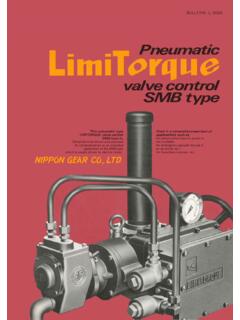Transcription of TITLES AND DEGREES IN KARATE - Doshikai Kendo …
1 TITLES AND DEGREES IN KARATE Claims of rank in KARATE should be taken with a grain of salt. Recently I was at a dinner party where a KARATE student asked me what black belt degree I held in KARATE . When I told her I was a Nidan (second degree ), I could see the disappointment in her face; how could a man study KARATE for more than three decades and only be a nidan. It reminded me of another dinner party in 1942 Kyoto, Japan. An envelope containing money was pushed across the table to Chojun Miyagi. As he passed it the man said, Ippitsu onegai shimasu. Ippitsu meaning a brush stroke, this was clearly a request for Miyagi Sensei to grant members of this group black belt ranks. Miyagi Sensei, who in any case disliked the concept of ranks, immediately pushed the envelope away stating that he could not comply with the request. He was greatly angered by this and returned to Okinawa never to visit Kyoto (or Japan) again saying, I believe that once dan ranks in KARATE are awarded, it will inevitably lead to trouble.
2 The ranking system will lead to discrimination within KARATE and KARATE -ka ( KARATE practitioners) will be judged by their rank and not their character. It will create inferior and superior strata within the KARATE community and lead to discrimination between people. For these reasons Miyagi Sensei awarded ranks to no one, neither Okinawan nor Japanese. It was only after his death in 1953, and the establishment of the Okinawan KARATE Federation in 1956, that a dan ranking system was introduced on Okinawa. It was something that no one there would have attempted while Chojun Miyagi was alive. For the how and why this could possibly have happened, we have to go back to the 1920 s and meet the men who brought Tode (China hand) to Japan. Chojun Miyagi (1888-1953) was one of the giants of KARATE . He was the son of a wealthy aristocratic family that had a thriving business.
3 He is considered the founder of the Goju-Ryu style of KARATE . He sponsored a 1926 research center in Okinawa to bring together a number of eminent masters to share their knowledge and promote the art as a national cultural treasure. Along with Gichin Funakoshi, Choki Motobu, and Kenwa Mabuni, he helped introduce Okinawan KARATE to mainland Japan. Miyagi Sensei was personally invited by Jigoro Kano (1860-1938), the founder of Judo, to come to Kyoto in 1928 and teach at the Butokuden. Gichin Funakoshi (1868-1957) was twenty years older than Miyagi. As a retired High School teacher, he had been teaching KARATE in Tokyo, Japan since 1922. He had adopted the practice of giving black belt ranks from Jigoro Kano, his sponsor, and in 1924 when he awarded seven of them to his senior students. Funakoshi Sensei was willing to bend to the status quo in order that KARATE would be accepted as a Japanese martial art.
4 He had joined a pro-Japanese group called the Kaika-to (Enlightenment-party) in Okinawa at the recommendation of his teachers, Yasutsune Azato and Anko Itosu. His students would later name his KARATE style Shotokan (Shoto s hall). Shoto (pine waves) was the pen name he used to sign his poems. Choki Motobu (1871-1944) was by far the most controversial of all the KARATE masters. He gained instant fame by knocking out a western boxer who was willing to take on anyone who would get into the ring with him. After being goaded by a friend to accept the challenge, a 54 year old Motobu entered the ring and faced a professional 32 year old Russian champion. At the sound of the bell, Motobu Sensei hit the Russian once in the head and knocked him out cold. Because the newspapers had no likeness of Motobu to put in their next issue, they used a picture of Funakoshi instead.
5 They reasoned; Funakoshi had just published his first book on KARATE , he was after all an Okinawan, and they all look the same, don t they? This incident caused a great animosity between Motobu and Funakoshi even though it was the fault of neither. It was, in fact, caused by the prejudice of the writer and Japanese prejudice for the Okinawans and any non-Japanese people in general. Kenwa Mabuni (1889-1952) was a living encyclopedia of some 52 Okinawan kata (patterns of techniques). A retired Okinawan Police Detective, he had studied with the great masters, Kanryo Higaonna and Anko Itosu from his early childhood days. His police work brought him into contact with many more masters, and he was able to learn more about KARATE kata than anyone before. He was universally respected by all who met and studied with him. He later chose the first two ideograms of his teacher s names for his Shito-Ryu KARATE style.
6 Yasuhiro Konishi was a man of considerable wealth and position. He was the most influential Japanese master, besides Kano Sensei, to sponsor KARATE instruction in Japan. He was already a master of Kendo and an expert in jujutsu. He became a student of all four men mentioned above. Jigoro Kano (1860-1938) created the DAN-KYU system in 1883. Kano wanted the Dan degree to represent an advanced level of proficiency in judo while the Kyu DEGREES represented varying DEGREES of proficiency below the Dan grade. He instilled in his students that the Dan rank didn t finish their training, but was just the beginning of a new phase in that training. At first Kano Sensei awarded a black sash to Yudansha (Dan holders), but in 1907 he developed the judo uniform and switched to the black belt that we know today. In 1895 the Japanese government created an association, Dai Nippon Butoku-kai, to oversee the martial arts.
7 In 1899 they built the Butokuden to hold exhibitions and tournaments; collect weapons, equipment, and historical information on all classical combative traditions; and publish martial arts-related material. The Butokuden was the equivalent of The West Point Academy in Japan. Sitting next to the old Imperial Palace and the Heian Shrine, it was the center of the recognized bujutsu and budo of the martial arts community. The Butokuden looked to foster robust strength, indomitable spirit, and virtuous character in its members. The Association developed a ranking system as a guide to personal perfection through these martial disciplines. In 1902 the title of Hanshi (model expert or teacher by example) and Kyoshi (teaching expert) were issued for the first time to outstanding Japanese masters. By 1906 the Japanese had won wars against both China and Russia.
8 The empire was on the rise, and in 1911 Kendo and judo became compulsory in physical education throughout the mainland and the outer islands. KARATE had entered the school system in Okinawa in 1902. Anko Itosu (1830-1915) had written his famous letter to the Ministry of Education, touting the benefits of KARATE practice for the Okinawan community and for the future conscripts to the Military. The Dai Nippon Butoku-kai took recognition of this and in December 1933 voted to evaluate KARATE as a Japanese martial art. In order for the art to be accepted, KARATE must meet the following criteria. 1. The word KARATE had to be written in Japanese characters instead of Chinese characters. 2. The KARATE groups had to adopt a standard uniform. 3. The KARATE groups had to set up tournaments. 4. A black belt system had to be established and tests given for DEGREES .
9 At this time Japan was at the height of its nationalism and frowned on anything that was foreign. This led to a number of problems for the KARATE masters in both Japan and Okinawa. (1) There was a large community in Okinawa in opposition with the Japanese occupation of their homeland, namely a separatist group called Ganko-to (literally, the Obstinate-party). (2) The word KARATE was a recent innovation. Called Tode in Okinawa, KARATE in Japanese, originally meant China hand. This was because many of the techniques in the indigenous art were of Chinese origin. (3) The art had just been made public after centuries of secrecy. There were over 50 formal patterns of techniques. Many masters had spent a lifetime mastering three to five forms. How could they pick which ones were essential for a common curriculum to all? The masters in Okinawa could not reach an agreement on these issues.
10 Meanwhile in Japan, Funakoshi and Mabuni had already begun working through most of the problems. 1) Funakoshi chose the ideogram Empty that also was pronounced Kara in Japanese, for the title of his groundbreaking book KARATE -do Kyohan. Hanashiro Chomo, one of his contemporaries and classmates under Itosu, had already used it in a 1905 book in Okinawa. 2) A lighter white uniform similar to the judo keiko-gi was adopted. 3) The tournament issue was the biggest problem. Funakoshi, Mabuni, Miyagi, and Motobu tried to develop safety gear for free sparring in KARATE for over a year. The results led to broken bones and concussions among their students. They conceded that KARATE was far too dangerous in its present state to be used in tournaments. They abolished them in their respective dojos. This wouldn t change until they had all passed on to the great void.








